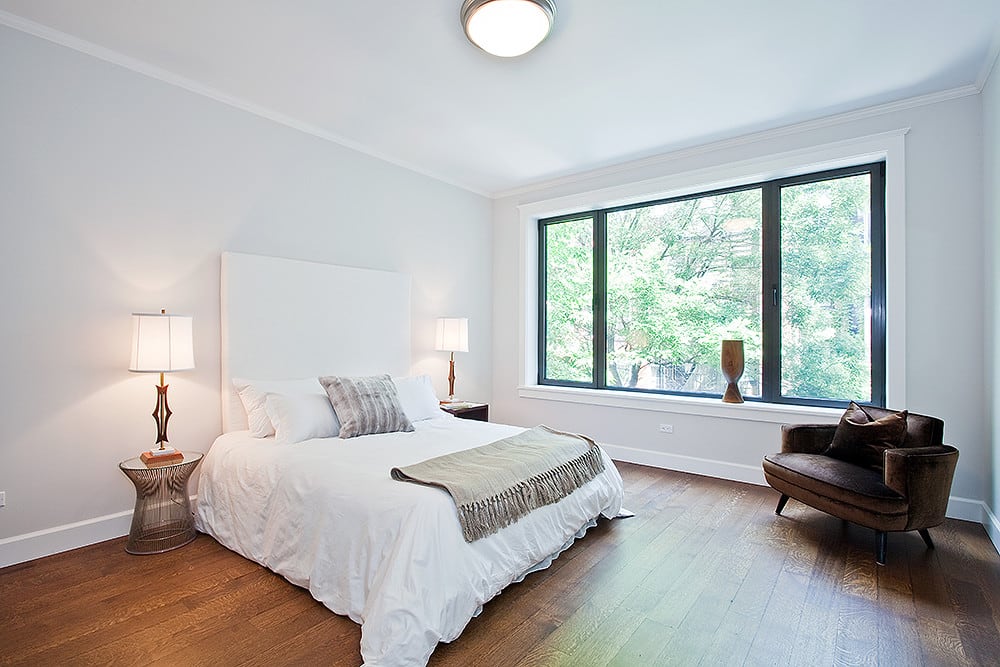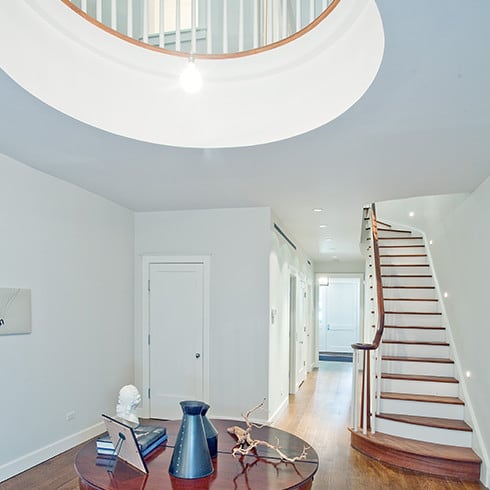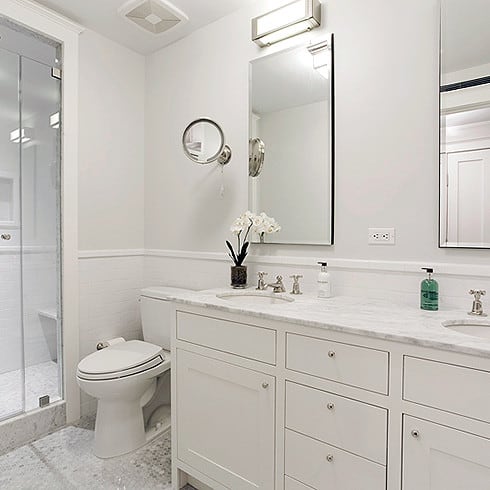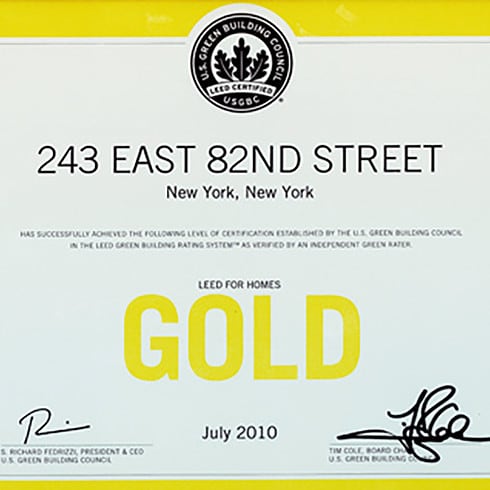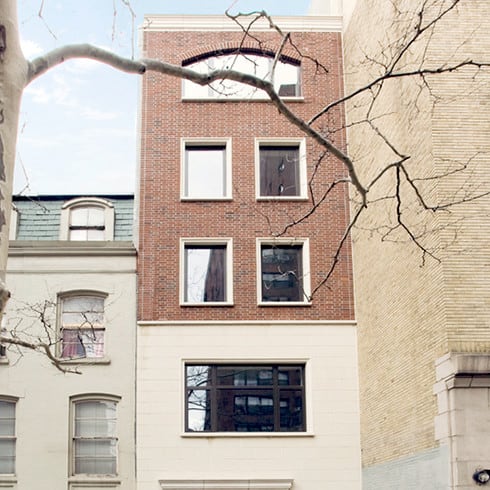New York, New York! – as immortalized in song, “If you can make it there, you can make it anywhere”. This has been proven true with the Oyster Capital Project on East 82nd Street in Manhattan. From inception, this 5,220-square foot, five level (plus basement), single-family townhome in the heart of the upper East Side, was redesigned as an energy-efficient, LEED project – no small feat in a dense urban environment like New York.
Renovating the Town Home in NYC

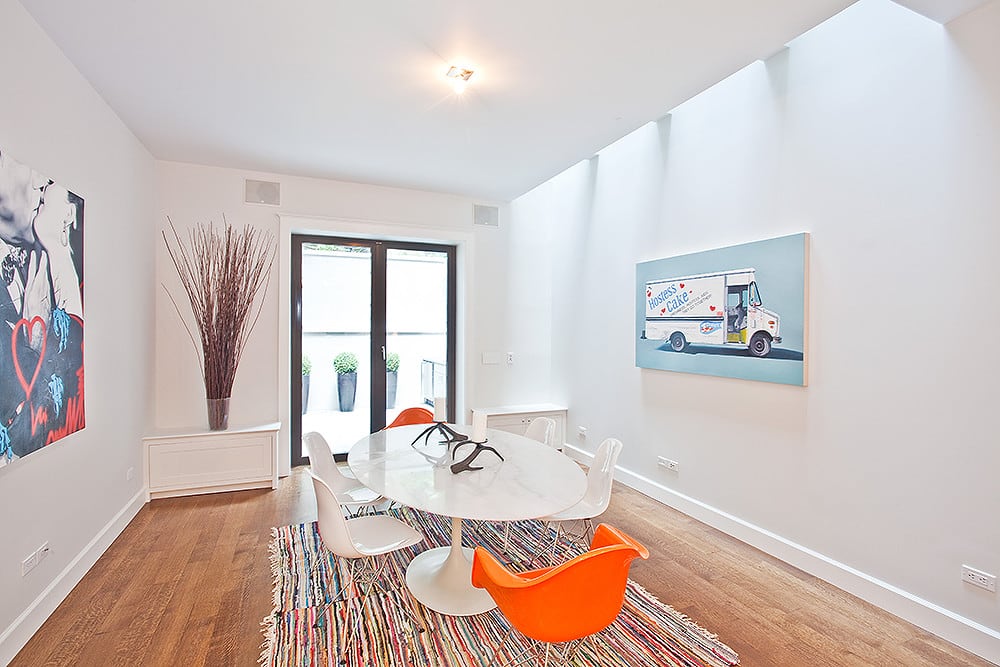
While the Oyster Capital Project is a magnificent achievement in both aesthetic and energy-efficient design, it is in fact, the first residential multi-story townhome awarded LEED Gold in New York City.
Incorporating both the traditional and modern, the project includes a traditional facade, a dramatic, curved staircase, 5″ rift and quarter sawn FSC solid white oak flooring and wall-to-wall Warmboard radiant heat. The home is heated with nine unique, temperature-controlled zones powered by one high-efficiency boiler. The facade has been updated with ultra-modern, high-efficiency aluminum windows and cast concrete pavers while the kitchen has been redesigned as a light and uncluttered space. The final result effortlessly combines clean lines, modern flavor and functionality with wide open spaces.
Type:
Remodel 5-story town home (+ basement)
Location:
Upper East Side, Manhattan, NYC
Total Square Footage:
5,220 square feet
Lot Size:
15'x100'
Floor Covering:
5” rift and quartersawn FSC solid white oak
Energy:
Energy-efficient boiler
Architect
Daniel Frisch Architecture
Daniel Frisch Architecture [DFA], located in New York, NY, was founded in 1991 as a full-service architectural and design firm, specializing in high-end residential projects. While the majority of their work is in Manhattan and Brooklyn, DFA has also undertaken projects in Connecticut, Maine, New Hampshire, Virginia, and Michigan.
In 2007 DFA was approached by developer Teddy Schiff to design the Oyster Capital Group project. Since it was designed to appeal to a broad market, the aesthetic components were intentionally made to be both modern and traditional, featuring a mix of modern terraces with cast concrete pavers and river rock, a traditional curving stair, and an open kitchen area. The commitment to green building also influenced this design interplay with the selection of highly-efficient aluminum windows; a modern element that also compliments the more traditional facade. The overall result is a style that is both timeless and flexible, allowing the buyer a mulititude of options when contributing their own personal design senses after the purchase.
“Broadly speaking, there were two distinct challenges to be confronted during the construction and design process. Of primary importance was building an environmentally respectful home that maintained the custom features and quality that would appeal to prospective buyers. Secondly, was the fact that this building did not have a specific end user, an issue DFA does not usually encounter. The result was the inability to provide specific features that would appeal to the needs a certain individual.
Radiant heat was chosen for its many health and lifestyle benefits. When radiant was initially suggested we were pleased that our LEED consultant immediately embraced the proposition, and we’re certain that the use of radiant was a key factor in attaining the first LEED for Homes Gold rating in Manhattan.
Warmboard was easily chosen over other radiant technologies due to its many technical advantages over its competition. The aluminum top sheet especially impressed us as a means of more evenly distributed heat. Specifically, we liked that the sub-floor would be pre-routed to accept the radiant tubing. In this respect, Warmboard made far more sense to use than the other products available.
Very few design allowances were required to use Warmboard. Our greatest challenge as designers was deciding where to locate and conceal the manifolds on each floor. This proved fairly easy to accomplish by addressing our needs early in the design process.
The Oyster Capital project has nine heating zones: two per floor, and one at the penthouse level. For flooring, we used 5” rift and quarter sawn FSC solid white oak throughout. Installation of the floor was fast and convenient for all parties involved.
Over the course of our last few projects with the Warmboard team, we have grown from cautious to enthusiastic. We think the Warmboard product addresses many of the historic pitfalls of earlier radiant systems, while providing the multitude of benefits of radiant heating. We encourage people to research the product and consider it for their own projects.” – Jodi Surfas, Daniel Frisch Architecture
Daniel Frisch Architecture
ph: 212-489-8941
Contractor
Horizon Contractors
Established in 1986 by Arlen Haruthunian, Horizon Contractors specializes in high-end residential projects throughout Manhattan.
“We were honored to have been awarded this project due to our background and expertise with similar projects, and to join forces with the Oyster Capital Group and Daniel Frisch Architecture. It gave us the opportunity to build the first LEED certified single-family residential townhouse.
One of the main requirements for energy efficiency was that the residence be fully airtight. So much so, that we had to introduce fresh air into the space. This required use of high R value for the insulation and properly weatherproofed exterior doors and windows. Use of Energy Star appliances was also a prerequisite. Another interesting requirement/choice was the need to capture runoff rainwater in tanks and use it to irrigate the landscaping on the property.
We originally thought, given the NYC location and restrictions that came with it, the maximum we could achieve was the Silver Certification from LEED. Instead, by adhering and completing additional Durability Strategies listed in the LEED checklist, we met the required points and were awarded the Gold Certification. This was quite an accomplishment, given the strict LEED guidelines that had to be met.
A large portion of the efficiency of the project involved the heating system. We wanted a heating system that evenly distributed heat throughout the entire townhouse. We found that by using Warmboard we were able to replace conventional radiators, thus saving floor space, provide even heat throughout the home and offer a ‘warm floor’ to walk on. Warmboard afforded us that opportunity. It has worked so well that we are using it again in our current project.” – Arlen Haruthunian
Horizon Contractors
ph. 917-273-1992
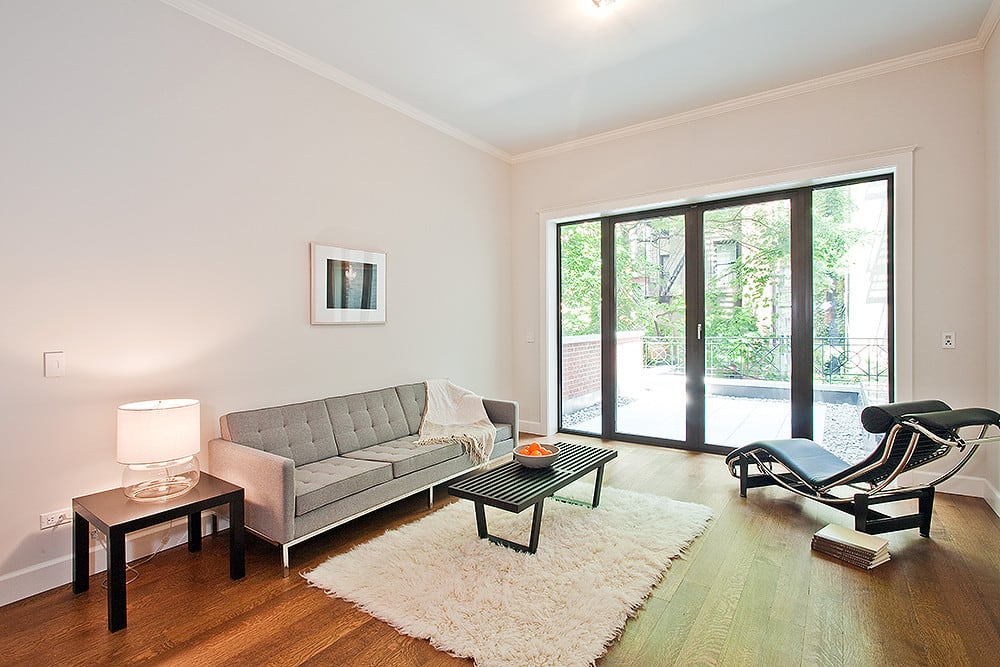
Developer, Homeowner
Teddy Schiff, Oyster Capital Group
Located in Manhattan, NY, Oyster Capital Group [OCG] acts as a principal specializing in urban infill projects and opportunistically invests in value added ventures with the luxury consumer in mind. OCG has two Manhattan single family townhouse sites currently under development; both are on the Upper East Side and pursuing LEED certification.
“We wanted to incorporate the principles of sustainable design into townhouse living. While it has existed for many years in the larger format condo buildings in NYC, it had not yet been brought to townhouse development. At the time, we were one of the first to apply under the LEED rating system, and to date, we are the highest ranking with a LEED Gold townhouse.
The house was built with family flexibility in mind. We designed closets for strollers, niches in the showers, an open kitchen layout and spacious bathrooms. The house has a casual elegance throughout the living spaces and offers many conveniences often requested by families building their own home from scratch. We have taken the work out of renovating a townhouse by creating a flexible, thoughtfully designed, unique, family friendly home.
We did extensive research and determined that a radiant floor heating system with a built-in sub-floor would provide the best product and the strongest feel. Warmboard came recommended not only by our LEED consultant but through existing customers who had great things to say about the product. Radiant heat means the customer gets to live in a healthier home! And unlike radiators, the house is heated more efficiently and the warm floors provide a cozy feel. Additionally, with Warmboard, the house can heat up faster when needed.
With extra time and dedication we were successful in building the first LEED Gold townhouse in Manhattan. We added features to the home’s systems to make it a healthier place to live (radiant floor heating, specific finishing materials, grey water recycling system etc). Our hope is that one day these things become standard building practices for the community at large.
We are currently building another project which will be listed for sale upon its completion. 161 East 80th Street is a substantial enlargement of an existing townhouse; 6,500 sf single family home with 2 gorgeous outdoor spaces, 6 bedrooms, an open layout, and Warmboard radiant heating throughout” – Teddy Schiff
Oyster Capital Group
ph. 212-836-4042
Going for Gold
Terry Alsberg, CEO of Warmboard
First of all, let me just say how thrilled I am in knowing that the Oyster Capital Project in Manhattan was awarded LEED Gold. We here at Warmboard are extremely proud to know that our product contributed to achieving this standard of excellence, and in doing so, will provide the eventual homeowners with the most comfortable and efficient radiant system available.
Now, as for the LEED for Homes initiative. LEED for Homes is a program designed to promote the transformation of the mainstream homebuilding industry toward more sustainable practices that actively work with all sectors of the homebuilding industry. By recognizing sustainable design and construction in homes nationwide, LEED for Homes helps builders differentiate their homes as the best in their markets, using a recognized national brand. Furthermore, homebuyers can more readily identify third-party verified green homes.
The LEED for Homes Rating System measures the overall performance of a home in eight categories: Innovation & Design (ID), Location & Linkages (LL), Sustainable Sites (SS), Water Efficiency (WE), Energy & Atmosphere (EA), Materials & Resources (MR), Indoor Environmental Quality (IEQ), and Awareness & Education (AE).
The LEED for Homes Rating System works by requiring a minimum level of performance through prerequisites, and rewarding improved performance in each of the above categories. The level of performance is indicated by four performance tiers – Certified, Silver, Gold, and Platinum – according to the number of points earned.
Warmboard can contribute to the Energy and Atmosphere category with a maximum of 11 points, and to the Indoor Environmental Quality category with a maximum of 4 points. Using a Warmboard radiant floor heating system that meets specific requirements can help satisfy 4 prerequisites, and earn a home up to a total of 15 points under LEED for Homes.
An example of a prerequisite that can be met for the Energy & Atmosphere category is if the radiant heating system utilizes a boiler (gas or oil fueled) with an efficiency of greater than or equal to 80 AFUE (in climate zones 1-3), or 85 AFUE (in climate zones 4-8), this will satisfy the prerequisite of section EA 6.1. (pg. 66)*
An example of additional points that can be earned is if the Warmboard radiant heating system includes an outdoor reset control. This will earn 3 points per section EA 5.3. (pg. 65)*
Click here to see the full list of prerequisites and additional points that Warmboard can contribute towards in the LEED for Homes Rating System.
For architects that incorporate LEED into their project design, Warmboard radiant floor heating can be a sizeable contributor to both prerequisite requirements and additional points to help achieve the desired certification level.
It is pertinent to note that most radiant floor heating systems can be designed to meet the specific requirements of the LEED for Homes program, although Warmboard makes these systems easier to plan and less costly to install compared to other radiant heating systems. And with Warmboard, homeowners receive the numerous benefits that have become synonymous with most advanced radiant panel available in the marketplace.
*USGBC LEED for Homes Rating System, www.usgbc.org/leed/homes
